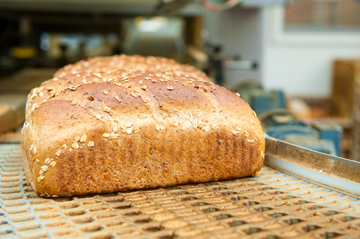Many manufacturing companies overlook the opportunity to patent aspects of their products or specialized manufacturing processes. This is especially true in the natural products industries, where unusual ingredients are often mixed together and specialized production processes are increasingly required to make food products and dietary supplement products that are acceptable to consumers. In most natural product categories, it takes substantial innovation for manufacturers to be able to produce successful functional and natural food or supplement products.
Under U.S. patent law, “food products” and selected “manufacturing processes” may be patented if they qualify as either a “composition of matter” or a new and useful “product of manufacture.” While recipes and formulations, per se, cannot be protected under patent law, a new and useful composition of matter, a molecule, or an innovative process for manufacturing products can be patented if they are new, non-obvious to those skilled in the profession, and useful to our society.
Many companies create patentable subject-matter in the normal course of their business, but they fail to recognize its value, or to understand that patents could provide them with a competitive advantage, increase the value of their company while enhancing shareholder value.
What does that mean? When it comes to “food products,” it means that when a non-obvious co-action or cooperative relationship between selected ingredients in a product can be shown to exist, that “invention” may be patentable. As well, when it comes to the industrialized manufacture of food products with such interactions, equipment often has to be modified or invented from the ground up to accommodate non-traditional food science applications – and that too may rise to the level of patentable invention.
While it has become easier over the years to create natural food products that are “as good as” or “better than” traditional food products, it is still hard to make highly specialized products that are truly acceptable to the consumer. Vegetarian entries, vegan products, dairy-free, gluten-free, allergy friendly products, or those that incorporate new and specialized hero ingredients, such as omega 3s from “vegetable sources,” and they all can present significant manufacturing challenges.
In many areas new ingredients are being combined to deliver the taste, texture, look and feel of traditional products. As well, existing manufacturing equipment and processes are being reinvented to accommodate these new and more complex product challenges. To those who can solve the product development and manufacturing problems that go with creating these more intricate and functional products, patents may be available and the competitive advantages that go with them.
The courts have taken the position that new recipes or formulations which merely involve the addition or elimination of common ingredients, do not rise to the level of patentable subject-matter. However, when innovative new food products are fashioned with unusual natural ingredients and specialized manufacturing processes that create the requisite co-actions and cooperative relationships, they may be patentable subject-matter. Thus, treating orange rinds with borax to prevent mold isn’t patentable, while the method of making a soft, uncured cheese with cured cheese flavor is patentable, as may be a method for mixing delicate cosmetic ingredients together. Starbucks, at one point may have had patentable subject-matter for the methods the used to prepare their unique drinks. Natural products should study how they combine their unusual ingredients and look for opportunities to patent their know-how.
The challenge is recognizing when one has patentable material that can be protected under the law, and then finding consultants, food scientists, and attorneys who can articulate and capture the often subtle new knowledge so that a well-written patent application may be filed with the U.S. Patent and Trademark Office.
Last year, in the U.S. alone, 500,000 patents were filed across all industry sectors – that’s one patent application every single second of every minute of every hour, of every day and night throughout the year! We are in an era where more and more companies are capitalizing on their knowledge both to protect their inventions from infringement, and to ensure their freedom to operate competitively in their chosen markets. A patent confers a competitive advantage because it allows a company to enjoy a monopoly around its invention, and so both the opportunity to produce a better or more unique product or service in the marketplace, and to keep others from practicing their invention in the same markets. Not everything can be patented, but most patents that are filed issue in a registration in the end. And if a patent can issue, it is usually a definite market advantage.
Copyright © 2011 KLM, Inc. All Rights Reserved.






